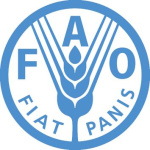- Industry: Agriculture
- Number of terms: 87409
- Number of blossaries: 0
- Company Profile:
Established in October 1945 with the objective of eliminating hunger and improving nutrition and standards of living by increasing agricultural productivity, FAO coordinates the efforts of governments and technical agencies in programs for developing agriculture, forestry, fisheries, and land and ...
In mammals, the process of escape of the ovum (egg cell) from the ovary.
Industry:Biotechnology
In orchids, seeds contain an unorganized embryo comprising only a few hundred cells. During seed germination this embryo forms a tuberous structure, called a protocorm, from which develops a complete plant. In cultures, vegetative parts of several orchids form round, smooth protocorms which may be multiplied indefinitely or induced to regenerate a whole plant.
Industry:Biotechnology
An early, cultivated form of a crop species, evolved from a wild population.
Industry:Biotechnology
Defined in the International Undertaking on Plant Genetic Resources as a collection of seed stock or vegetative propagating material (ranging from tissue cultures to whole plants) held for long-term security in order to preserve the genetic variation for scientific purposes and as a basis for plant breeding as multiplication and evaluation. <i>cf</i> active collection.
Industry:Biotechnology
Defined in the International Undertaking on Plant Genetic Resources as a collection which complements a base collection (q.v.) and is a collection from which seed samples are drawn for distribution, exchange and other purposes such as multiplication and evaluation.
Industry:Biotechnology
In plant pathology, strains of bacteria causing disease in specific plant cultivars.
Industry:Biotechnology
In plants, the inability of the pollen to fertilize ovules (female gametes) of the same plant.
Industry:Biotechnology
In prokaryotes, a cell that has been genetically altered through the uptake of foreign DNA. In higher eukaryotes, a cultured cell that has acquired a malignant phenotype.
Industry:Biotechnology
In quantitative genetics, the average of the phenotypes of two mates.
Industry:Biotechnology
In quantitative genetics, the part of the deviation of an individual phenotype from the population mean that is due to the additive effects of alleles. In practical terms: if an animal is mated with a random sample of animals from a population, that animal's breeding value for a certain trait is twice the average deviation of its offspring from the population mean for that trait.
Industry:Biotechnology
